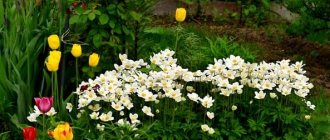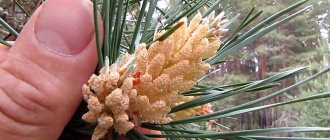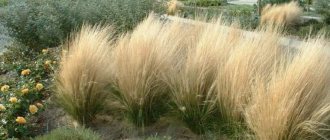What to consider when choosing
Planting material is prepared and high-quality seed is selected. We take it from this year's harvest. Old ones do not germinate well, so ask your summer residents. For excellent results, do not purchase from a nut in the store, but assemble it yourself.
Recommendations for selection:
- Check that the raw materials are intact and without chips. It is unacceptable to have mold.
- Be able to feel the weight in your hand. A very light bone product, this is a sign of drying out of the core.
- Holes on the upper shell are evidence of damage to the inside by parasites.
To grow successfully, look for ones that are ripe with a fine rind and great flavor. By choosing more fruits, we will achieve better fruiting.
Variety "Ideal"
This famous variety overturned the standard idea of the walnut as a purely southern plant. A relatively short tree (up to 5 m versus 30 meters of classic southern nuts), it lives not 400 years, but 50, but its productive qualities are unique. It blooms twice a season, the fruits are collected in clusters, it is quite frost-resistant (in the Urals you will need shelter for young plants - that’s all), it bears fruit unusually early - at 2-3 years of life. The short summer of the middle zone is enough for the crop to ripen well. As experienced walnut growers say, the “Ideal” variety has shown itself to be excellent in the Moscow region, near St. Petersburg, and in Vyazma.
Unfortunately, no one shared a photo of an adult tree; it is impossible to find a photo online with at least an approximate appearance of this miracle variety in adult form. However, you can watch the tree in the video on the “My Garden” blog.
Where it all begins
Let's see how to do everything correctly. Features of cultivation: to plant seeds in spring, three months will require germination or stratification.
With this intention, at home they take a box with wet sand and stick the knuckles in, then transfer it to the cold, where the temperature is +5 - for example, to the cellar. After a month, take it out to air and soak the base.
Seeds are placed in water 3-5 days before planting. In the fall, gardeners do not often plant; they prefer to plant in May.
Appearance of flowers
There are two radically different forms of flowering. The reason is the difference in varieties. Flowering is divided into protandric and protagynous forms. Walnut is a monoecious plant that has dioecious flowers. They are all green.
The stamens are collected in straight earrings about 10 cm long, 1-3 pieces each, which are located on last year’s growths. The pistillate flower has a different shape. It looks more like an open bud, on top of which two small leaves (stigmas) have formed. The pistillate flowers are elongated , and in the upper part they turn into a column with two stigmas.
Below is a video about walnut blossoms:
Protagonistic form
The difference between the forms is the order in which the male and female flowers bloom. In the protagynous plant, the male flowers bloom first. There is a possibility that the female inflorescences will not open . In this case, the tree will not bear fruit.
Protandric form
In the case of the protandrous form, the female inflorescences bloom first. In this case, there is also a possibility that the nut will have problems with fruiting.
Attention!
If the female inflorescences fall off before the male ones bloom, there will be no ovaries. Because of this feature, the tree needs a partner with a flower of a different shape.
Moving outside
Planting in open ground begins with the onset of May days. Select a powerful seed. Lay only with the seam facing up, otherwise the tree will not grow quickly. Deepen it 8 cm into the hollow and insert three bones, set the step between them to 25 cm. The groove is filled with earthen soil and compacted.
Young seedlings will appear in 10 days, and by the arrival of October they will stretch up to 15 cm. In the subsequent period, the trunk grows.
Description
Today, everyone probably knows what a walnut tree looks like. This is a perennial that belongs to the Walnut family. It can reach a height of twenty meters, with a dense spreading crown. The leaf of the walnut tree is imparipinnate, located on the petiole, up to forty-five centimeters long. This is a monoecious crop with small unisexual flowers.
Walnut, care, cultivation, watering, planting of which will not be a burden even for a beginner in gardening, is a dioecious plant. It has two types of generative buds - female and male. Buds with developing female flowers are formed at the ends of fruitful annual shoots. The male buds on the fruiting shoot are located on the side and collected in an inflorescence. They are sometimes called earrings. Walnut is a tree in which dormant buds are also formed; they are always located on the central shoot and are intended to restore the plant in case of damage to its above-ground part.
This powerful tree stores pollen in catkins (male flowers). The wind carries it over a distance of up to one hundred meters. This long-liver grows for 500-600 years if the walnut tree is grown and cared for in accordance with agricultural technology. Almost all types of soil are suitable for it. The only exceptions are saline, swampy, heavily eroded soils.
Walnut is a plant that loves illuminated areas and tolerates fairly low temperatures. Quickly and easily recovers from damage. Dead shoots are replaced by actively growing new branches.
We plant in the ground
How to plant seedlings on a strip of land. In order for growth to occur safely, it is important that the seedling strengthens and develops, and it will be transplanted into the growing zone when it reaches 2 years. It is preferable to dig in the spring and the work should be carried out very carefully, since it is very easy to disturb the root rods.
Do not break up the compacted soil; it is better to dig the plant into a pre-prepared ditch. If the central root is too long, it is cut with a knife, leaving only up to 45 cm. The cut border is lubricated with a clay solution.
Suitable fertilizers
Fertilizers must be applied carefully, since the soil under the tree does not like loosening. Of course, not the soil itself, but the root system of the nut, which needs calm in the summer.
Nitrogen fertilizers are applied in small portions, preferably not during the fruiting period, especially if the nut is young. Nitrogenous fertilizers can then cause bacteriosis.
But phosphorus-potassium fertilizers are excellent for fertilizing, as they have a beneficial effect on the fruiting of the tree.
Plot
To successfully grow a tree, you should take into account that it is heat-loving and needs a lot of sunlight. A moist soil environment is suitable, but dampness will be a hindrance. Choosing a location requires careful consideration.
Groundwater must be below four meters. They have roots that can grow and cause damage to the foundation, so it is worth planting at a distance of 4 m from the house and all buildings.
The tree thrives in loamy soil that has the required amount of humus. Wetlands and areas closed to air are not suitable for it.
Tree diseases
Walnuts are often affected by the fungus Gnomonia leptostyla, which causes a serious disease called anthracnose. Anthracnose appears as yellowish, brownish round spots on the leaves.
- Initially, spots appear on the tips of the leaves.
- The spots then spread further.
- The infected surface dries out.
- Fungi appear on the underside of leaves.
- The fruit also has indented brown-black spots.
- Early infected fruits die.
Most infected fruits drop prematurely. The disease can be controlled by collecting and destroying infected fruits and leaves on which the fungus appears.
Garden layout
The walnut trees will be transformed into a magnificent garden; for this purpose, the location of the trees will be planned. Seedlings are planted using several steps:
- Potholes are made - 65x65x65 cm.
- Put humus with potassium-phosphorus fertilizer from 10-15 kg (20-35 g) and 0.8-1.0 kg of lime into all holes.
- When planting a plant, make sure that the root neck is 3-4 cm above the level of the garden.
- The earthen deposit is compacted and watered (3 buckets of water per additive).
- It is allowed to mulch the soil with sawdust and peat.
- Near the young animals, hammer a crutch and tie it with a rope to protect it from strong winds.
With proper care and error-free formation of the top, within four years the nut-bearing trees will bear fruit.
Harm
As can be seen from the above, this is a very useful plant - the walnut tree. These fruits also have harm, or rather, contraindications.
People prone to or suffering from protein allergies should avoid eating these tasty nuts. In especially severe cases, eating fruits can provoke anaphylactic shock.
The same can be advised to people predisposed to obesity, since these fruits are very high in calories. In patients suffering from psoriasis, eczema, and neurodermatitis, the disease may worsen even after eating two or three nuts.
Doctors do not advise exceeding the daily consumption of this product. Otherwise, the beneficial properties may have an undesirable opposite effect, as well as cause inflammation of the tonsils or irritation of the oral mucosa.
Walnut is an undeniably healthy tree. However, caution must be exercised when consuming its fruits. If they darken or become moldy, it means they have begun to produce a toxic enzyme that can cause serious harm to your health.
In a flowerpot
If you like the idea of growing in a pot, look for an impressive container and stock up on soil. You can buy the finished mixture at a flower shop, or you can prepare it yourself at home. Stir in 1 portion each: peat bog, turf, manure.
You need a container with a height of 25-30 cm. Its size will help the rhizomes to develop. The second dish for sprouts is smaller, deeper and wider. The device is first filled with drainage, then what was mixed earlier is placed in it. Seeds will be planted in mid to late April.
The nut is placed in the hole to a depth of 8 cm and covered with substrate. Then it is moistened and grown at +25+30 and good lighting. The first shoots will appear in 1-2 weeks. If a seedling is planted for decorative purposes, then the tree is moved to a larger tub.
Once a year, between September and November, it is replanted and 10% of the roots are cut off. In summer, weak shoots are cut off to form the main branches.
Soil preparation
If the fertile soil layer is quite shallow, it should be replaced or additionally fertilized. To do this, add a large amount of manure, which is mixed with ash, and add superphosphate. This composition is applied to a depth of 80 centimeters in the planting hole. In the future, if the tree grows favorably, every year it is necessary to change the soil along the width of the crown. In prepared and fertilized soil, we make a hole measuring 40 x 40 cm. To further stimulate the growth of young lateral roots, you can put a sheet of PVC film at the bottom of the hole. When planting, carefully spread the lateral roots horizontally and sprinkle them with fertile soil. The upper roots are left at a depth of about seven centimeters from the surface.
Fruit content
Courtship begins in spring. Care includes pruning branches, which is done until mid-March. This is how the crown is formed and diseased branches are cut off. Removal of excess branches is done before sap flows. If there was not enough snow, then the tree is flooded. At the same time, preventive measures are taken against all kinds of insects and diseases; it is recommended to dilute 3% copper sulfate. In addition, they are whitened with lime.
On warm days, it is recommended to sprinkle ammonium nitrate for nutrition. Adult trees over 3 years old receive 6 kg of this substance per year. On dry, hot days, the green space is watered occasionally. At this time of year, fungicides are used to combat midges or fungi.
In July, it is recommended to speed up growth by pinching individual hazel shoots. Watch a detailed video about this.
Fruit
Today you can hear from many gardeners from different regions of our country: “We grow walnuts in the country.” And this is not surprising, because the fruits of the tree in question, which are false drupes, are the most valuable food product.
The outer pericarp is colored light green and has a smooth surface. When the nut is fully ripe, the pericarp turns brown or black. Its function is to protect the nut seed.
The plant usually blooms in April-May. The fruits fully ripen at the end of August. Externally, the nut kernel resembles the human brain. It contains many valuable nutrients - at least 65% fat, carbohydrates, proteins, minerals and tannins, a huge amount of vitamins (B, A, C, B2 E, K, P and others). The chemical composition of the nucleus includes a wide range of amino acids.
Photo of walnut
Pros of shells
It is unlikely that you will be able to create something functional from a nut shell, but it is quite possible to make:
- costume jewelry;
- Christmas decorations;
- funny little animals;
- various toys;
- original souvenirs.
Walnut shells have a number of qualities that are so necessary when making crafts:
- very durable;
- not afraid of water;
- does not dry out over time;
- beautifully painted;
- has a very elegant texture;
- goes well with other available materials.
Necessity of the event
You can't do without trimming walnuts. It is necessary for several reasons. If the crown is too thick, it is difficult for the sun's rays to penetrate, which makes the tree less resistant to diseases and pests. The walnut crown also needs to be trimmed to increase the strength of the tree and reduce the occupied area: in one area it will be possible to grow more walnut trees with compact crowns than with overgrown ones. Crown formation begins when the walnut reaches 2–3 years of age. Summer residents usually choose the “broom” shape, in which the crown looks natural, but there are other types.
When a walnut reaches a certain age, its yield begins to decline steadily. In order to prevent this trouble, anti-aging pruning is necessary.
Pruning may be unsuccessful if you do not prepare a well-sharpened pruner in advance.
It is difficult to cut branches with blunt tools, and it is easy to cause significant damage to the trunk. Do not overdo it, otherwise, instead of forming the crown of a perennial tree, you will cause the plant to die.











